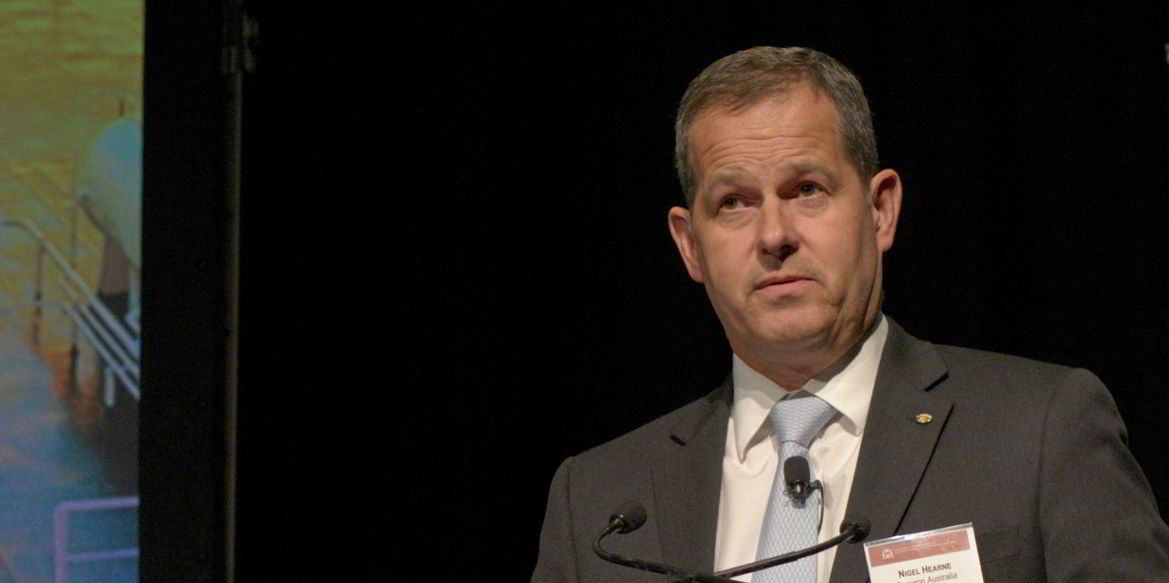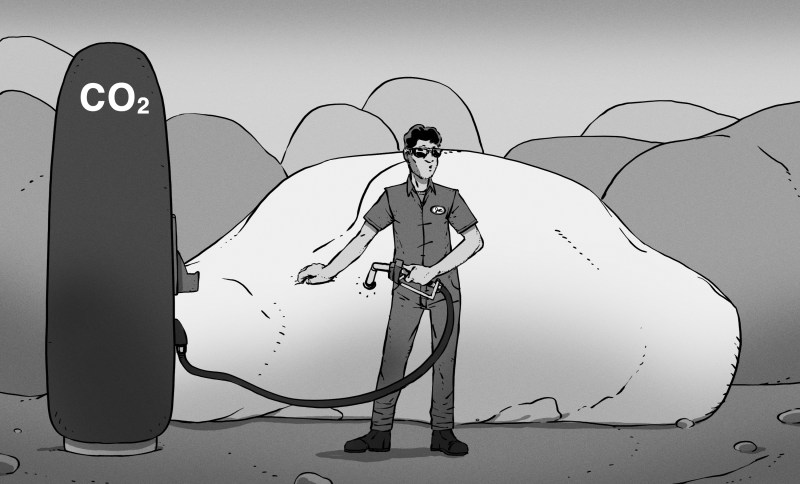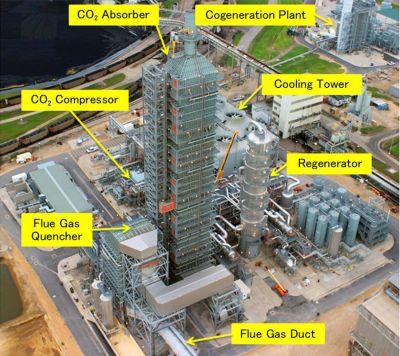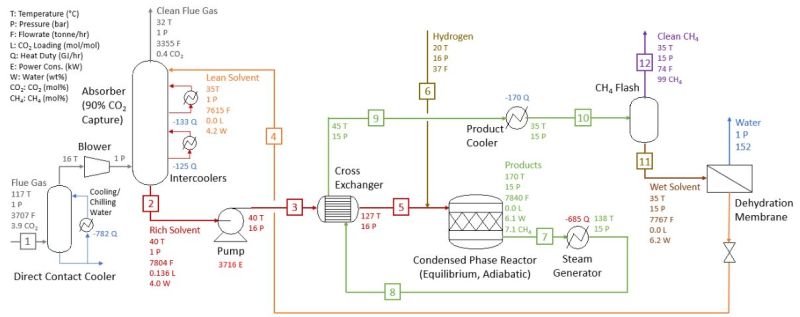UPDATES
Report: SoCal Pipeline Operator Took Hours to React to Spill Alarm
In an enforcement order released Tuesday, the U.S. Department of Transportation's pipeline regulator said that the operator of the ruptured crude line off Orange County had indication of a breach several hours before it shut down the line or reported a potential spill.
At about 0230 hours on Saturday morning, the control room personnel for operator Beta Offshore received a low pressure alarm on the San Pedro Bay Pipeline, an indication of a potential breach. According to the Pipeline and Hazardous Materials Safety Administration (PHMSA), Beta Offshore reported that the line was shut down at 0601 - more than three hours after the alarm.
Beta Offshore did not report the possibility of a breach to the U.S. Coast Guard's National Response Center (NRC) until 0907, more than six hours after the first alarm.
This timeline does not appear to be consistent with previous public statements from Beta's parent company, Amplify Energy; at a press conference Tuesday, Amplify CEO Martyn Willsher told the OC Register that his firm became aware of the potential leak at about 0800 - more than five hours after the alarm and two hours after his firm had shut down the pipeline.
In its order to Beta Offshore, PHMSA did not address the earliest spill reports sent to NRC, which were submitted by a third-party vessel on Friday evening - long before the first alarm sounded.
An ROV and dive inspection of the full 18-mile length of the San Pedro Bay Pipeline was completed earlier this week. One section of the line measuring 4,000 feet long has been displaced horizontally by about 100 feet, and a portion of this segment has a breach of about 13 inches across. According to PHMSA, the damaged section is located about five miles offshore in about 100 feet of water, within reach for commercial divers.
The unified command for the response believes that the damage is not consistent with normal wear and tear: the steel pipeline is 16 inches in diameter, half an inch thick and coated in concrete, and it is not likely to move on its own. Investigators are considering multiple potential causes, but one possibility is an anchor strike from one of the dozens of vessels waiting in San Pedro Bay. The bay's anchorage is unusually busy due to unprecedented congestion at the twin ports of LA / Long Beach.
As a precautionary measure, PHMSA has ordered Beta Offshore to keep the pipeline shut down until it authorizes startup. It also ordered a complete test procedure for the full length of the pipeline, including metallurgical testing on the failed pipe wall section. Beta must also review and assess its emergency response and public-notification procedures.
'Protect Our Coast,' Wildlife Defenders Say
as California Oil Spill Puts Species at Risk

The National Audubon Society has designated Pacific waters off Southern California's coast as a crucial habitat for elegant terns, and ocean conservation group Oceana said Thursday that this week's oil spill in Huntington Beach is likely to harm the species. (Photo: Mark Watson/Flickr/cc)
An analysis released by Oceana showed that numerous vulnerable and endangered species have been put at risk following one of the largest spills in the state's recent history, which sent at least 126,000 gallons of crude oil into Pacific waters and nearby wetlands last Saturday—the result of a ruptured pipeline.
"Wildlife and coastal economies cannot continue to be jeopardized by dangerous offshore drilling," said Geoff Shester, California campaign director and senior scientist at Oceana. "It's past time to permanently protect our coast from offshore drilling."
The Eastern North Pacific's remaining population of endangered blue whales use the area for feeding on krill, which may now be threatened with a massive die-off due to the oil spill, Oceana reported. The spill may also leave gray whales unable to migrate through the area as they do every year.
"Wildlife and coastal economies cannot continue to be jeopardized by dangerous offshore drilling. It's past time to permanently protect our coast."
Elegant terns, a bird species considered vulnerable due to the extremely limited number of places where it nests, could lose "one of their only remaining nesting sites left in the world," Oceana said, impacting their feeding areas.
"Toxic oil spills don't discriminate in polluting ocean ecosystems. From the seafloor to the ocean's surface, the waters off Southern California contain some of the most endangered species and fragile habitats on the West Coast," said Shester. "While the extent of the damage to oiled habitats and wildlife and the economic implications of closed fisheries are still unfolding, we hope that this analysis will help inform response efforts and that it will be considered when ensuring the responsible party is held fully liable for damages that could have been prevented."
Other seabirds who make their habitats in coastal wetlands—including brown pelicans, black skimmers, and least terns—may also suffer lasting effects of the spill even after cleanup crews do what they can to mitigate the damage.
"Once inundated with oil, it is impossible to fully remove oil from these wetlands, which are critical stops along the Pacific Flyway for dozens of species of migratory birds," said Oceana.
The group's warning was echoed by experts including Steve Murawski, a marine ecologist at the University of South Florida.
“Once the oil is in the marsh and it gets down below the level of the sediments, it is there pretty much forever," Murawski told The Guardian Thursday.
Along with bird and marine species commonly known to the public, Oceana identified deep-sea wildlife and sectors of the economy that are expected to suffer the effects of the spill, including:
At least 15 types of deep-water coral, which provide key nursery grounds for recreational and commercial fish species and which can be smothered and killed by spilled oil;
Rocky reefs and kelp forests, which have been federally designated "habitat areas of particular concern" because of their sensitivity, rarity, and ecological importance for a diversity of Southern California fish and invertebrates; and
Commercial fisheries including market squid, tunas, swordfish, spiny lobster, spot prawn, and red sea urchin, which were valued at $27.2 million in 2020 and have a full value "several times greater" when factoring employment, processing, and seafood products.
"We need the federal government to stop selling off our oceans for offshore drilling and Congress can make sure that happen in the Build Back Better Act, which is currently being negotiated," said Diane Hoskins, campaign director at Oceana. "We know that oil is toxic. We know we shouldn't eat it, breathe it, or swim in it. But for marine wildlife, that's not an option when oil spills occur."
The group found that an end to all new leasing off California's coast would protect 654,000 jobs threatened by oil spills and over $50 billion in gross domestic product for the state, as well as prevent more than 19 billion tons of greenhouse gas emissions and more than $720 billion in damages to people, property, and the environment.
"It's time to permanently protect our oceans from any more offshore oil and gas leasing," Hoskins said.

PRESS RELEASE
For Immediate Release
Thursday October 7, 2021
Center for Biological Diversity
Video Maps Nearly 1,400 Pipeline Leaks, Spills, Other Problems Since 1986
As Orange County beaches suffer a massive oil spill reportedly caused by an undersea pipeline linked to offshore drilling rigs, a new analysis reveals a troubling history of pipeline accidents in California.
Released today by the Center for Biological Diversity, the analysis found that since 1986, nearly 1,400 oil and gas pipeline leaks, spills and other incidents in the Golden State have caused at least $1.2 billion in damages, as well as 230 injuries and 53 deaths.
A new time-lapse video informed by the analysis maps every significant pipeline incident in California — along with their financial costs and toll in injuries and deaths — from 1986 to July of 2021. On average California has suffered 40 significant pipeline incidents a year, according to the federal data.
“The Orange County spill is a wake-up call on the risks of oil and gas pipelines, but these things have been wreaking havoc in California for decades,” said Kristen Monsell, oceans legal director for the Center. “The leaks and spills and pollution go on year after year. These deadly and costly incidents will continue until we put an end to this dirty extraction business.”
Today’s analysis focuses on pipeline incidents since 1986, including spills, leaks, ruptures and explosions. It’s based on records from the federal Pipeline and Hazardous Materials Safety Administration, which maintains a database of all U.S. pipeline incidents classified as “significant” — those resulting in death or injury, damages more than $50,000, more than five barrels of highly volatile substances or 50 barrels of other liquid released, or where the liquid exploded or burned.
Hundreds of miles of pipelines run through California’s coastal areas. They transport oil and gas from drilling and fracking.
Today’s analysis does not include the damage caused by the Orange County leak, which investigators believe came from a breach in an undersea pipeline linked to the Elly platform, an offshore rig built in 1980. The leak released an estimated 144,000 gallons of oil into the ocean, killing birds, fouling beaches and saturating the Talbert Marsh ecological reserve.
“Whether oil and gas pipelines are in the ocean or on land, they’re basically time bombs,” said Monsell. “This video shows how much damage they do to our coastlines and in our communities. That’s one more reason why President Biden and Gov. Newsom must stop approving new fossil fuel projects and wind down existing drilling.”

At the Center for Biological Diversity, we believe that the welfare of human beings is deeply linked to nature — to the existence in our world of a vast diversity of wild animals and plants. Because diversity has intrinsic value, and because its loss impoverishes society, we work to secure a future for all species, great and small, hovering on the brink of extinction. We do so through science, law and creative media, with a focus on protecting the lands, waters and climate that species need to survive.
Orange County oil spill leaves many clues, dead ends and mysteries, but few answers

Nearly a week after a 13-inch tear in an undersea pipeline resulted in a massive oil spill off the Southern California coast, the clues keep piling up, but the mystery of what caused the rupture and who is ultimately responsible remains unsolved.
Like other investigations into mechanical failures that have led to catastrophic results, an understanding of the chain of events that led to the spill is playing out like twist-filled thriller. Leads are being followed. Some have already resulted in dead ends; others are still unfolding.
It's still unclear how the pipeline ruptured, when the damage was done and what could have prevented it. Even the exact location of the pipe running along Orange County coast is also the subject of some doubt.
"The frustrating part is that the information is coming at investigators at the speed of light, and they can be inundated with irrelevant noise," said Richard Kuprewicz, who by his account has investigated hundreds of pipeline incidents over the course of 20 years. "They have to filter that out of the way."
As containment and mitigation efforts advance, nearly a dozen government agencies have become involved in an investigation that has already taken them to the Port of Oakland, where authorities spoke Wednesday to the operators of a German container ship that had been on-site at the time of the spill. The ship was allowed to continue on with its journey, however, and the ship's owners said the vessel was no longer under scrutiny.
Kuprewicz warns that answers may take time.
"We should have an answer in a couple of months, which is about how long it takes to do the forensic analysis," he said, which should include removing the damaged pipe from nearly 100 feet of water. "They should be able to determine with a high degree of confidence what the most likely failure mechanism was."
Of course, determining the cause of the rupture will be easier than finding out who is responsible. "It will take more time to get to the who, than to the why," Kuprewicz said. "The why follows the science. The who follows the rule of law."
As of Thursday, the most probable suspect continued to be a shipping vessel that might have hit and possibly snagged the pipeline in the process of anchoring. But identifying that ship will require establishing when the pipeline was damaged. Complicating that work is the possibility that damage took place months before the pipe cracked open.
The answer to these questions is critical in not only preventing a similar spill from taking place but also in determining liability, which could possibly extend to criminal negligence.
Already a performer on the Huntington Beach boardwalk has sued the pipeline operator in federal court, claiming that the spill will harm his business and has exposed him to hazardous chemicals. The lawsuit is seeking class-action status.
On Thursday, another lawsuit filed in federal court on behalf of Laguna Beach shoreline property owners also seek class-action certification and damages for loss of enjoyment, potential lowered property values and diminished rental income.
Rebecca Ore, commander of the U.S. Coast Guard Sector Los Angeles-Long Beach, was reluctant to give an estimated cost of the cleanup. "We're still in the early phases of this, and responses can be a long-term effort," she said.
But Kuprewicz anticipates this effort could "easily go into the hundreds of millions."
"Oil spills don't tend to be cheap affairs, and this is a high-profile oil spill with a high-profile investigation," he said. "I've seen minor pipeline failures that have escalated into billions of dollars."
Orange County Supervisor Katrina Foley said there is a federal liability trust that will be used to reimburse public agencies for the cost of the cleanup. It is not clear how much money is in the trust.
"We are tracking every single minute, every single supply, piece of equipment," Foley said. "All the public agencies are working towards submitting reimbursements. I don't have any reason to believe we won't get reimbursed."
Seven days into the investigation, what is known is clear: The pipeline, which is 16 inches in diameter, is nearly 18 miles long, and connects three offshore oil platforms—Ellen, Elly and Eureka—with an onshore processing plant in the Port of Long Beach.
The infrastructure is owned by Amplify Energy Corp., a publicly owned energy company headquartered in Houston. Its portfolio, according to its website, includes "mature, legacy oil and natural gas fields."
Amplify has owned the property for nine years. It was initially developed by Shell Oil Co. in the late 1970s and went into production in January 1981. It is one of more than two dozen offshore oil platforms that are a familiar sight off the coast.
Late in the afternoon of Friday, Oct. 1, Newport Beach resident Jolie Sheppick noticed a smell, "like when they resurfaced the streets in the area and had a spill."
But even as Sheppick and others began calling authorities, workers in Platform Elly's control room were unaware of a problem in the pipeline until 2:30 a.m. Saturday when, according to federal regulators, they received an alert indicating low pressure.
Low-pressure alerts do not always mean a release in the line, and "it isn't reasonable to expect an operator to shut down a line whenever they hear a low-pressure alarm," said Kuprewicz, but "something doesn't look right here."
In comments this week, Martyn Willsher, who runs Amplify Energy, has not explained what warnings his company may have received or what initial actions they took.
He has said, however, that a little after 8 a.m. Saturday, workers performing a line inspection noticed a sheen in the water and "instantly" radioed back to the offshore platforms, where workers launched an incident response plan. The offshore platforms and pumping operations were "shut down immediately thereafter."
About half an hour later, Amplify Energy notified its crisis and emergency management company and federal regulators, according to Willsher, adding, "If we were aware of something on Friday night, I promise you—we would have immediately stopped all operations."
The initial suspect was corrosion. "Steel pipes want to corrode," Kuprewicz said.
Even if the pipeline was damaged by a ship anchor, corrosion could have played a role in the rupture, slowly compromising the steel at the point where it was weakened or stressed, but investigators will also take into consideration other factors, independent of an anchor strike or corrosion, including a manufacturing defect at welding sites.
Given these possibilities, the role that inspections could have played in preventing the spill will come under scrutiny.
Offshore platforms and pipelines are monitored by a raft of federal regulatory agencies that are mandated to conduct periodic inspections of aging equipment. In California, their work alone focuses on more than two dozen platforms from just north of Point Conception to Huntington Beach. Some are in state waters, some are in federal waters, and all are about 40 years old.
"It's not a robust system of oversight," said Miyoko Sakashita, oceans program director for the Center for Biological Diversity.
Newly released documents from the federal Bureau of Environmental Safety and Enforcement show that the broken pipeline had been inspected every two years since 2007 by private contractors hired by Amplify Energy.
In 2019, repairs were made in three areas where pipeline deformation occurred, according to the summary report by federal investigators. "The internal inspection is acceptable and no remedial action is recommended at this time," the bureau concluded.
But as speculation grows over the role that corrosion and lax government oversight may have played in the spill, the Joint Unified Command, overseeing the investigation, announced on Tuesday that divers and footage from remotely operated submarines discovered that a 4,000-foot section of the pipeline had been violently displaced.
"The pipeline has essentially been pulled like a bowstring," said Willsher, describing some force that had pulled the pipe about 105 feet in an almost "semicircle."
The suspicion that an anchor might have caught and dragged the pipeline comes at a time when disruptions in the global supply chain, due to the pandemic, have led to a fivefold increase in traffic over the last few years. The bottleneck has required many more ships to wait at anchor before entering the ports.
Not long after the spill, early analysis of satellite imagery suggested that the container ship might have crossed the pipeline after straying thousands of feet from its anchorage.
After examining the images, however, the nonprofit environmental watchdog group Skytruth said it had found no evidence of drifting.
On Wednesday, Coast Guard officials boarded the ship that was in Oakland at the time and later released it without explanation. The ship is currently in route to Mexico.
The owner of the ship, Hapag-Lloyd, was aware that some marine traffic information showed that it had moved while it was anchored, but that "seems to be wrong," a company spokesman said. The ship's captain has provided logs, updated hourly, showing the ship did not leave its anchorage place for several days, he said.
Tracking down the responsible ship could prove extremely difficult. Investigators haven't always been able to find the culprit in suspected anchor strikes of underwater pipelines, or even come to a final conclusion that it was an anchor that caused damage, federal records show.
Investigators continue to look into the possibility that other ships damaged the pipeline, but some have raised the question of whether the pipeline might have moved so that its position on nautical charts was no longer accurate.
As the investigation continues, Kuprewicz advises patience. The first priority is to contain and mitigate the spill. Other answers will come in time, he said.
"The public tends to make conclusions that outpace the science," he said. "They think they can solve this right off the bat. But there is a due process to these procedures. The rule of law applies, and this process takes a while."
©2021 Los Angeles Times.
Distributed by Tribune Content Agency, LLC.








